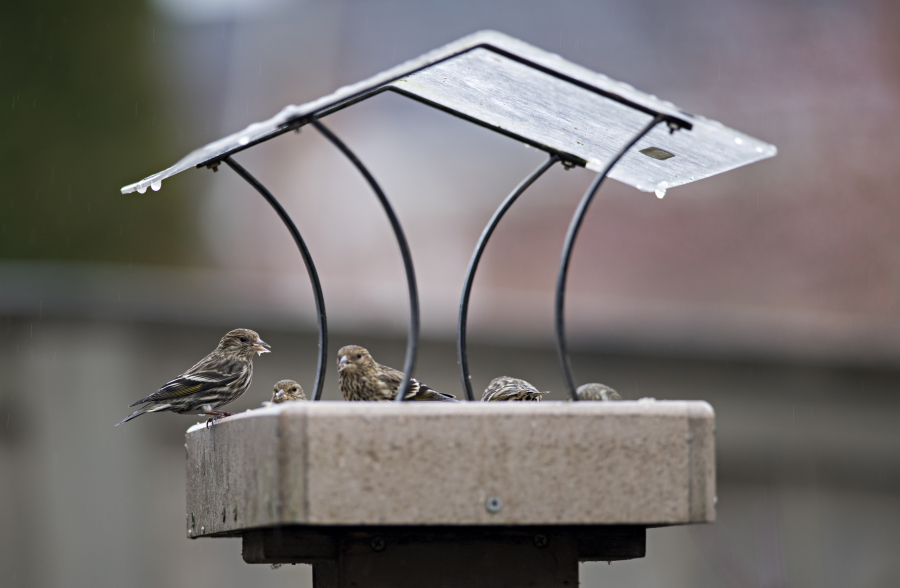Bad news for bird lovers who enjoy lavishing food and water on their favorite visitors: If you really do love birds, you’ll take the bird feeders and bird baths down.
Those luxurious attractions are major vectors in the current spread of salmonellosis, a common and usually fatal bird disease caused by the salmonella bacteria. The result this winter has been a widespread die-off of songbirds all over the region — especially finches, including the very pine siskins that were noted in a Columbian story Tuesday for their rare swarming of feeders here.
“The first indication of the disease … is often a seemingly tame bird on or near a feeder. The birds become very lethargic, fluff out their feathers and are easy to approach,” said Washington Department of Fish and Wildlife veterinarian Kristin Mansfield. “Unfortunately, at this point there is very little people can do to treat them. The best course is to leave the birds alone.”
When the WDFW started hearing reports in January of ill and dead birds in the Seattle area, it recommended that people in that area discontinue using bird feeders and bird baths, according to communications manager Stacy Lehman. That led to a huge response from across the Western U.S., and realization that the problem was much bigger.
Now, Lehman said, guidance first intended for Seattle and vicinity is statewide. Western Washington residents are asked to stop using bird feeders and bird baths, at least through the end of this month. The ask is even bigger in Eastern Washington: Stop feeding the birds until the end of March. South of the Columbia River, the Portland Audubon Society is also recommending a bird-feeder pause of at least 14 days.
The point is to keep birds from congregating close together. “Anything that draws birds together can spread the disease” through droppings and saliva, Lehman said.
The best thing birds can really do now, she said, is socially distance from one another. Sound familiar?
Lehman acknowledged that taking down backyard bird feeders is an especially painful recommendation to have to make when so many isolated or out-of-work people are looking to birds for little bits of solace and joy. She’s even been cheered at the number of reports and calls of concern she’s gotten because they mean lots more people are paying attention to birds that she realized.
Lehman still hopes people will participate in this weekend’s Great Backyard Bird Count (birdcount.org), a chance to tally birds that visit their yards and provide the data to scientists. But she urges people to take feeders down first — or, if you must keep your feeder up, clean it daily with warm soapy water and a little bleach. Rinse before refilling.
Nothing less than daily cleaning will do to control the disease, Lehman said.
“It’s a lot of work, for some people,” she said. “But I’ve learned, a lot of people are really concerned about birds.”




